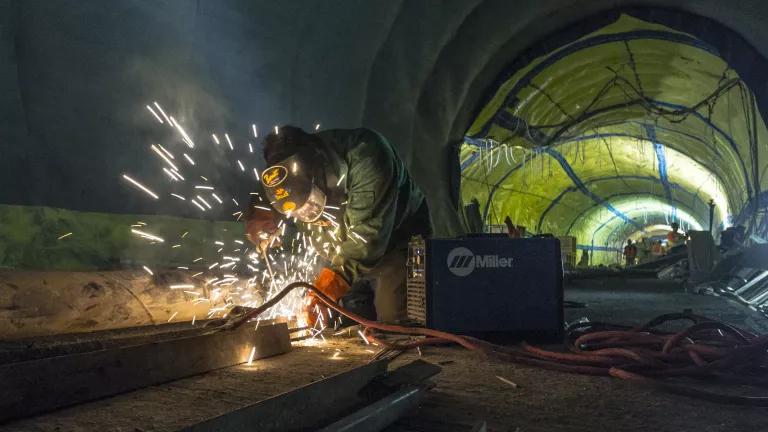NY Solar Milestone Proves Policies Work
New York has become the top community solar market in the U.S., with more than one gigawatt (GW) of community solar installed and operational—enough to provide clean energy to more than 200,000 homes across the state.

The most recent IPCC Report lays bare the fact that in fighting the climate crisis, time is not on our side. Without immediate and deep greenhouse gas emissions cuts across all parts of our economy, limiting climate change to 1.5°C will quickly be beyond reach. This is sobering news, but recent weeks have made clear that we have the solutions already in hand. We have the technologies and, just as important, we have the policies to achieve this goal.
Take for example the exciting milestone announced in March by New York Governor Kathy Hochul: New York has become the top community solar market in the U.S., with more than one gigawatt (GW) of community solar installed and operational—enough to provide clean energy to more than 200,000 homes across the state.
And much more is on the way: New York also has the largest pipeline in the nation with over 700 projects totaling 2.3 GW, enough to power an additional 400,000 homes. This is important not just because it accelerates progress towards meeting New York’s Climate Leadership and Community Protection Act’s requirement of obtaining 70 percent of state’s electricity from renewables by 2030, but also because it provides compelling evidence that the state’s clean energy policies are working.
Since 2011, New York’s NY-Sun program has supported the installation of solar on more than 165,000 homes or businesses, provided over $1.3 billion in incentives across New York, ensured that over $200 million is dedicated to low-to-moderate income (LMI) households in the state, and helped create over 12,000 jobs in the solar industry.
New York has built on this success with the implementation of a solar roadmap (recently approved by the Public Service Commission) to expand the NY-Sun program into one of the largest and most inclusive solar programs of its kind, including incentives for an additional 2.2 GW of community solar projects, enough to power an additional nearly 400,000 homes. The roadmap also includes ambitious targets for projects located in and around New York City, incentives for community solar projects that serve LMI subscribers, and prevailing wage requirements for solar projects greater than one megawatt to promote the continued growth of high-quality solar jobs.
This rapid growth in renewable energy is not unique to New York. Further west, the Southwest Power Pool which includes 11 states in the Midwest and southwest, set a record in late March when the region’s electricity supply was 92% renewables (mostly wind), surpassing the previous record of 88% in May 2021, making it the first regional transmission organization to serve more than 90% of its load from renewables. Many of the 14 states in the Southwest Power Pool have or had renewable portfolio standards (RPS), a policy which sets renewable energy targets and is largely responsible for increasing the amount of renewables in the U.S.
In September 2021, California did even better, serving over 95% of its load from renewables. California also has an RPS, which it has repeatedly surpassed and updated. While both of these achievements contain important caveats (SPP hit this goal in the middle of the night and California achieved this number for only a few seconds), they are nonetheless remarkable feats, unthinkable even a few years ago, and further demonstration that renewables will play an increasingly large role in our energy future.
These policies have created a virtuous cycle. The markets they have created have helped make wind and solar the cheapest and overwhelmingly most attractive generation resources. These low costs combined with high energy costs and ever worsening impacts from climate change are driving consumers to increasingly opt for clean energy to power their homes and fuel their vehicles. This makes it so that these technologies get even cheaper and then policies can set even higher standards.
There is no time to waste. We have the technologies and the policies to quickly and equitably decarbonize our economy. The only thing we need is the political will to make it happen. Luckily, the determination and hard work necessary to accomplish this task is, like the wind and solar it champions, a renewable resource.




